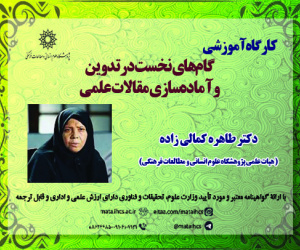واکاوی زباهنگ مردسالاری و زن سالاری در فرهنگ ایرانی: مقایسه موردی فیلم های سینمای ایران در دهه های 1360و 1390 (مقاله علمی وزارت علوم)
درجه علمی: نشریه علمی (وزارت علوم)
آرشیو
چکیده
پژوهش پیش رو بر آن است تا در بستر الگوی هایمز [39] به بررسی زباهنگ «مردسالاری» و «زن سالاری» در فیلم های ایرانی بپردازد. این پژوهش از نوع کیفی و توصیفی بوده و درحقیقت انتخاب زباهنگ ها با هدف بررسی تفکرات و تغییر نگرش و دیدگاه فرهنگی جامعه ایرانی در دو دهه 1360 و 1390 است. در همین زمینه، 100 فیلم ایرانی که از نوع خانوادگی و اجتماعی و شامل 50 فیلم دهه 1360 و 50 فیلم دهه 1390 هستند از نظر گفتمانی و چگونگی به کاربردن گفت وگوهای نشان دهنده زباهنگ «مردسالاری» و «زن سالاری» بررسی شدند. حدود 500 پاره گفتار از فیلم های سینمایی ایرانی دهه 1360 و 500 پاره گفتار از فیلم های سینمایی دهه 1390 یادداشت و واکاوی شدند. مشخص شد که بیشترین بسامد زباهنگ مردسالاری در فیلم های ایرانی دهه 1390 به موارد تهدید، بزرگ بینی، عصبانیت، دستور، متلک گویی، امرونهی، نیش وکنایه، پرخاش و تحقیر اختصاص یافته است و بیشترین بسامد زباهنگ «زن سالاری» در فیلم های ایرانی دهه 1390 شامل تعیین تکلیف کردن، غر زدن، تحقیر کردن، کنایه زدن، جلب توجه کردن، عصبانیت، شکایت و بزرگ بینی است. به نظر می رسد با توجه به تغییر و تحولات فرهنگی و اجتماعی جامعه ایرانی در گذر زمان و پیشرفت چشمگیر فناوری در سراسر دنیا و تأثیر مستقیمی که این پیشرفت بر فرهنگ و نگرش جامعه ایرانی داشته است، طرز تفکر و نگرش جامعه دستخوش تغییراتی شده و دیدگاه افراد جامعه از تفکرات مردسالار به تفکرات زن سالار تغییر یافته است. در واقع، همان گونه که انتظار می رفت، می توان دهه 1360 را مصداق بارز تفکر مردسالارانه و دهه 1390 را مصداق بارز تفکر زن سالارانه برشمرد. در پایان، مجموعه ای از کاربردهای این زباهنگ، با عنوان هنجارهای گفتمان، بررسی و مشخص شدند.Analysis of the Cultulings of “Patriarchy” and “Matriarchy” in Iranian Culture: A Comparative Case Study of Iranian Movies in Two Decades
The close relationship between language and culture can be understood from the analysis of language and culture in historical knowledge, philosophy, sociology, anthropology, and psychology. The fact that language and culture are inextricably interconnected can help examine the pivotal role of the language of a speech community to get significant information about its culture. Conceptualization of an overarching field of study can postulate how the realizations of cultuling (culture in language) can be entrenched in a language. Thus, the aim of this present study is to investigate the “patriarchy” and “matriarchy” cultulings in Persian movies from the viewpoint of Hymes’ (1967) SPEAKING model. This is a qualitative research to demonstrate Iranian culture and find the covert reasons of using the cultuling of “patriarchy” and “matriarchy”. To this end, the total 100 Persian movies from two decades of 1980s and 2010s were investigated based on the 500 extracted language expressions for each decade. The most recurrent cases of cultuling of “patriarchy” encompass signs of threatening, pride, anger, domination, order, sarcasm, wiggery, ridicule and contempt for the movies in 1980s. In contrast, the cultuling of “matriarchy” was delineated through decision-making, scolding, humiliating, wisecracking, attracting, complaining, showing anger, showing oppressed, pride, and ignoring for the movies in 2010s. The findings revealed that the patriarchy role is less dominant from 1980 to 2020. In fact, the patriarchy has been replaced by matriarchy these days. This can be concluded that the frameworks have some implications for learners, teachers, and educationists who are interested in the culturology, cultuling, and cultural studies.









